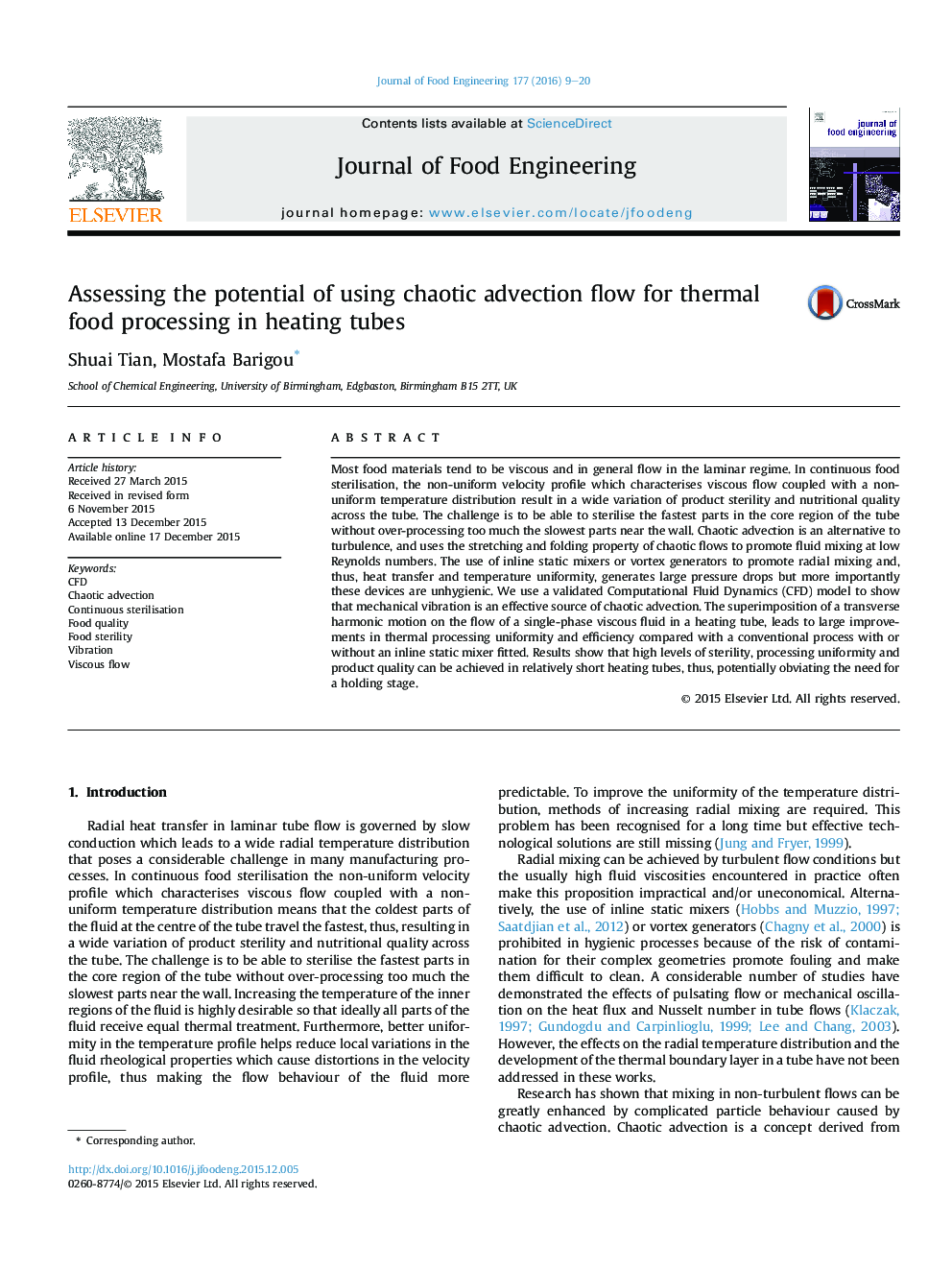| Article ID | Journal | Published Year | Pages | File Type |
|---|---|---|---|---|
| 222714 | Journal of Food Engineering | 2016 | 12 Pages |
•Transverse vibration induces strong chaotic advection in viscous flow.•Chaotic advection enhances wall heat transfer and radial temperature uniformity.•Chaotic advection enables high levels of sterility to be achieved in short heating tubes.•Chaotic advection leads to quasi-uniform sterility with minimum loss of quality.•Thermal processing with chaotic advection flow may obviate the need for a holding stage.
Most food materials tend to be viscous and in general flow in the laminar regime. In continuous food sterilisation, the non-uniform velocity profile which characterises viscous flow coupled with a non-uniform temperature distribution result in a wide variation of product sterility and nutritional quality across the tube. The challenge is to be able to sterilise the fastest parts in the core region of the tube without over-processing too much the slowest parts near the wall. Chaotic advection is an alternative to turbulence, and uses the stretching and folding property of chaotic flows to promote fluid mixing at low Reynolds numbers. The use of inline static mixers or vortex generators to promote radial mixing and, thus, heat transfer and temperature uniformity, generates large pressure drops but more importantly these devices are unhygienic. We use a validated Computational Fluid Dynamics (CFD) model to show that mechanical vibration is an effective source of chaotic advection. The superimposition of a transverse harmonic motion on the flow of a single-phase viscous fluid in a heating tube, leads to large improvements in thermal processing uniformity and efficiency compared with a conventional process with or without an inline static mixer fitted. Results show that high levels of sterility, processing uniformity and product quality can be achieved in relatively short heating tubes, thus, potentially obviating the need for a holding stage.
